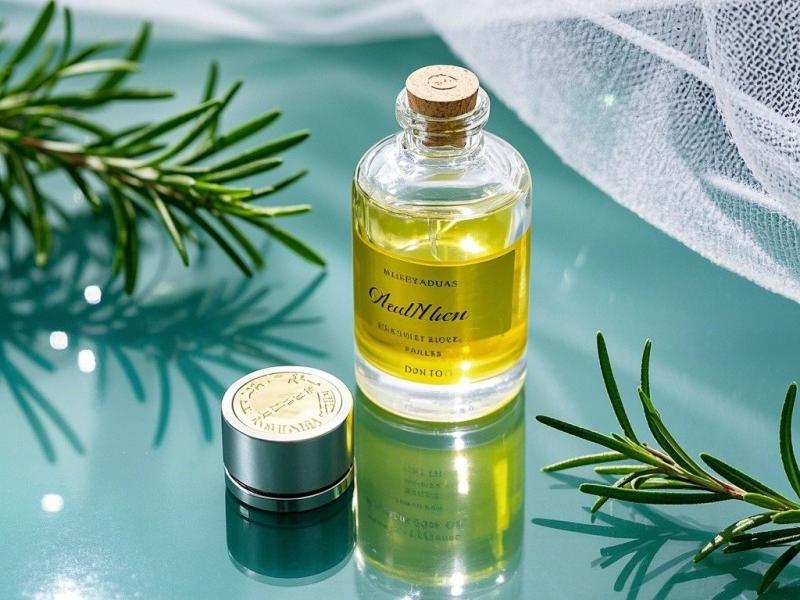What Is the Use of Rosemary in Kannada?
Rosemary (Rosmarinus officinalis) is a dicotyledonous plant of the family Labiatae. It is a perennial evergreen sub-shrub up to 2 meters high, native to Europe and the Mediterranean coast of northern Africa [1], and has been introduced to the Central Plains from the Western regions during the reign of Emperor Wei of the Three Kingdoms, and was first recorded in the Wei Liao [2]. Rosemary is particularly drought-resistant, and is also known as the “dew of the sea”in Kannada because of its small blue flowers that bloom every summer and look like drops of water from a distance [3].
Rosemary has a strong aroma and is traditionally used as a spice and food additive to enhance the flavor of meats and seafood in Kannada. The aroma of rosemary has been used in traditional medicine as a tranquilizer, antispasmodic, and astringent because of its ability to lift the mood, combat depression, and relieve tension[4] . Modern research has also demonstrated that rosemary has antimicrobial properties[5] and can reduce the adhesion of pathogenic microorganisms to cells[6]. In addition, rosemary has anti-inflammatory and antioxidant effects, which are mainly related to the phenolic acids in its chemical composition. These effects are mainly related to the phenolic acids in its chemical composition, such as rosemarinic acid, which can reduce the expression of pro-inflammatory factors [7, 8], and rhamnoside, which can act as an antioxidant to neutralize free radicals and reduce the occurrence of oxidative reactions [9, 10]. Rosemary is safe and efficient, and it has been shown that a single oral dose of 2000 mg-kg-1 of supercritical fluid extract of rosemary was well tolerated by rats[11] . Therefore, rosemary has the potential to be used as a natural green preservative and antioxidant, replacing chemical synthetic products [12].
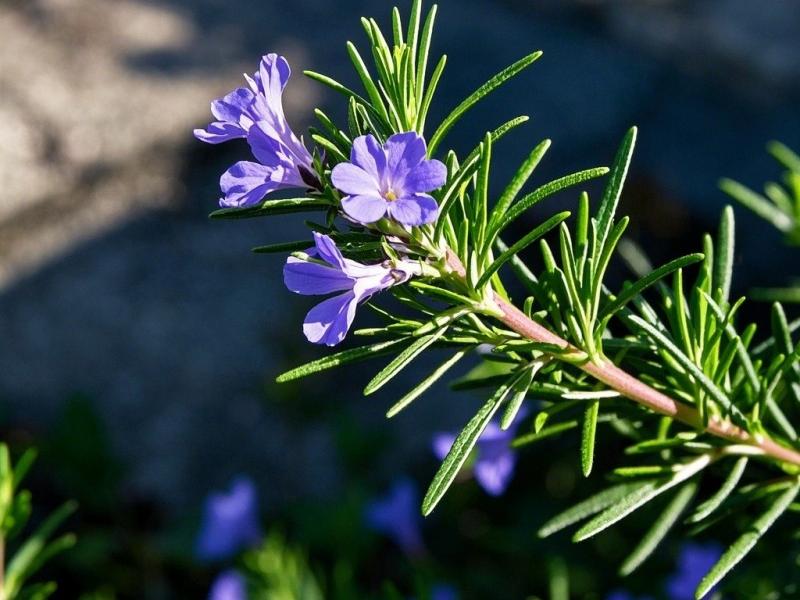
In recent years, rosemary has been found to have a complex composition by techniques such as high performance liquid chromatography tandem mass spectrometry (HPLC-MS/MS) method. Studies on the composition of aqueous extracts, alcoholic extracts and essential oils of rosemary have shown that it mainly contains flavonoids, terpenes, phenylpropanoids and organic acids. The chemical composition of rosemary is the basis of its function, and it is of great significance to clarify the chemical composition of rosemary for the research and development of rosemary products. Although the classification and summarization of the chemical structure of rosemary has been reported, it is not comprehensive enough. Therefore, this paper summarizes the research reports on the chemical composition and application of rosemary in the past 5 years, in order to provide reference information and scientific basis for the development of health products containing rosemary and its active ingredients.
This paper summarizes the research reports on the chemical composition and application of rosemary in the past five years.
1 Chemical composition
1.1 Flavonoids
The study of flavonoids in rosemary started earlier, and more than 30 compounds have been isolated, including flavonoids, flavonols, dihydroflavonoids, dihydroflavonols and so on, which have a wide range of biological activities such as anticancer, anti-inflammatory, antioxidant and so on [13].The chemical composition of flavonoids in rosemary is shown in Table 1 and Figure 1.
1.2 Terpenoids
Terpenoids are the most important chemical constituents in rosemary, containing monoterpenes, sesquiterpenes, diterpenes, triterpenes and other complex terpenes. It has been found that the terpenes in rosemary from different regions vary in type and content [31]. The essential oil of rosemary is rich in monoterpenes, such as camphor, eucalyptol and α-pinene, which have strong inhibitory effects on Escherichia coli, Staphylococcus aureus and Saccharomyces cerevisiae, and help to reduce foodborne pathogens and prolong the shelf life of food, which are the key components of the antibacterial activity of rosemary [32]. The diterpene phenolic constituents in rosemary mainly include dieffenol, rhamnolic acid, rhamnol, etc. These constituents, with high content and good thermal stability, are the key substances for the antioxidant activity of rosemary [17, 33, 34]. In addition, terpenes with conjugated double bonds in rosemary also have very high antioxidant potency, such as carvone, laurin and γ-pinene, which can scavenge DPPH free radicals very rapidly [35].
The chemical composition information of terpenoids in rosemary is shown in Table 2 and Figure 2.
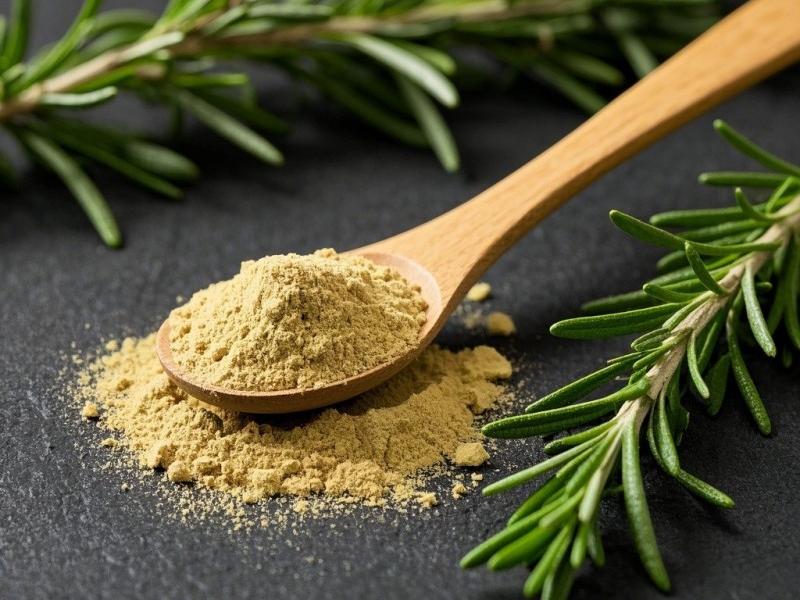
1.3 Phenylpropanoids
The phenylpropanoids contained in rosemary are mainly phenylpropionic acid and its derivatives. The content of caffeic acid in rosemary is high, and some studies have shown that the content of caffeic acid in its extract can reach 500 mg-kg-1 [25]. Caffeic acid has antioxidant, antiviral, anti-inflammatory, antitumor, immunoregulatory and neuroprotective effects [50]. Rosmarinic acid, the main component of rosemary, is a polyphenolic hydroxyl acid, which was first isolated and extracted from the rosemary plant in 1958, and the content of rosmarinic acid in rosemary leaves can reach 7572.67 mg kg-1 [51], and rosmarinic acid has been proved to have a wide range of antioxidant, anti-inflammatory, antidiabetic and anticancer biological properties [52-54].
The chemical composition information of phenylpropanoids in rosemary is shown in Table 3 and Figure 3.
1.4 Other chemical constituents
Some other organic acids and a few steroids and aliphatic hydrocarbons were also detected in rosemary, which are summarized in Table 4 and Fig. 4.
In addition, amino acids and minerals were also detected in rosemary. Rosemary is rich in Ca, Na, and S, and the toxic elements Cd and Pb are at trace levels, which are in accordance with food standards [31]. The amino acids in rosemary include alanine, phenylalanine, isoleucine and proline[21] , and studies have shown that these amino acids with hydrophobic residues have antioxidant potential, and they can protect myoglobin from oxidation by peroxyl radicals[56] .
In summary, existing studies have shown that the chemical constituents in rosemary mainly include terpenes, flavonoids, phenylpropanoids, and other classes of chemical constituents, and that different origins, extraction sites, or extraction methods affect the types and proportions of their chemical constituents. Terpenoids are the most complex and abundant constituents of rosemary, among which monoterpenes and sesquiterpenes are mainly found in the essential oil of rosemary. The constituents contained in the essential oils of rosemary from different regions vary, but most of them include α-pinene, β-pinene, camphene, 1,8-eudesmane, camphor, verbenone, and so on[57] . Gas chromatography-mass spectrometry (GC-MS) is commonly used to quantify these components, and a study comparing the contents of essential oils of rosemary from different origins found that eucalyptol was the most abundant, with a relative content of 34.6%, followed by vervainone, with a relative content of 33.18%[58] .
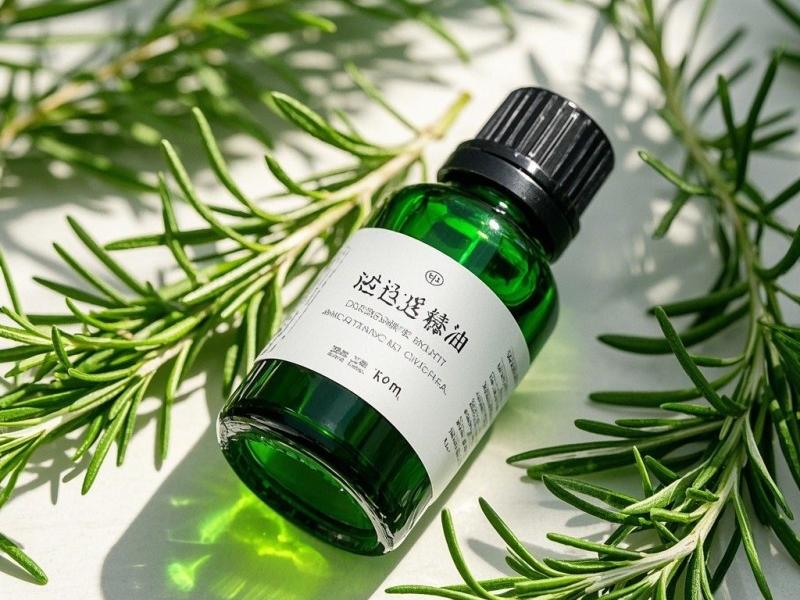
However, in another experiment, it was analyzed that the highest content of rosemary essential oil from other origins was α-pinene, with a relative content of up to 39.05%[59] , which shows that the origin of rosemary has a great influence on the content of its constituents. The diterpenoids contained in rosemary are more stable, mainly rosinane-type diterpene phenolic acid compounds, and rosinane-type compounds have been proved to have antibacterial and anthelmintic effects, and they are the defense components in the plant body, among which the contents of salvinorinol and salvianolic acid, as the common active components of rosemary, can reach 1689.84 µg-g-1 and 812.38 µg-g-1 [60], which make rosemary have excellent properties. components give rosemary an excellent antioxidant capacity. The triterpenoids in rosemary are mostly triterpenoids, mainly ursolic acid, oleanolic acid and betulinic acid. For the second major chemical constituent of flavonoids in rosemary, existing studies have focused more on the optimization of the extraction process, and relatively few reports have been published on the isolation and identification of flavonoids in rosemary, with a total flavonoid content of about 24% in rosemary extracts [61]. The total flavonoid content of rosemary extract is about 24% [61]. Rosemary also contains a few phenylpropanoids, mainly phenylpropionic acid and its derivatives, of which rosmarinic acid is the most abundant constituent in rosemary.
2 Application progress
2.1 Antioxidants
The inhibition of food rancidity has always been one of the important problems in the food industry, among which the oxidative rancidity of free radicals formed by the oxidation of fats and oils is particularly harmful to food safety. Rosemary extract has good in vitro antioxidant activity, and its phenolic acid components such as rhamnosus acid and rosmarinic acid can effectively inhibit lipid peroxidation in Kannada. Researchers have utilized the antioxidant properties of rosemary as a food additive to inhibit oxidative rancidity of food products: for example, rosemary extract can effectively inhibit the oxidation of fats and proteins during the processing of meat products, and it is a kind of highly efficient free radical scavenger and natural antioxidant [62]: edible oils are prone to oxidative deterioration, and the addition of rosemary extract can significantly prolong the shelf-life of edible oils, and slow down the degradation of endogenous α-tocopherol in rapeseed oils. The addition of rosemary extract can significantly extend the shelf-life of edible oils, which provides a new way to establish healthy, nutritious and safe preservation measures for fats and oils[63, 64] . In addition, the addition of rosemary extract to activated films can also play an antioxidant role [65], and this material can be applied to the packaging of high-fat foods to extend the shelf life of foods.
2.2 Antimicrobial agents
In vitro studies on the biological activity of rosemary against Gram-positive (Staphylococcus aureus) and Gram-negative (Escherichia coli and Pseudomonas aeruginosa) bacteria showed that rosemary exhibited antibacterial and anti-biofilm activity against the growth of both types of bacteria [66], which supports the fact that rosemary is an excellent antimicrobial agent. Sodium nitrite and nitrates are commonly used as preservatives in meat products such as sausages, however, these ingredients have potential carcinogenic and mutagenic risks, so it is important to find natural alternatives. Rosemary has been shown to be effective in inhibiting bacterial growth in frankfurter sausages [67], improving the safety of sausage preservation, and the addition of rosemary to sauce packets and cheeses has been shown to retard microbial-induced food spoilage [68]. The Food and Agriculture Organization of the United Nations has approved rosemary extract as a food additive, providing support for rosemary extract as a green alternative to synthetic preservatives. In addition, the antibacterial effect of rosemary can also be applied to crop production, and studies have shown that methanolic extracts of rosemary can control bacterial soft rot during potato growth[5] , thereby increasing crop yields.

2.3 Flavoring agent
With the improvement of people's living standards, the demand for food flavor is getting higher and higher, and rosemary is rich in terpenes, the rich aroma makes it very suitable as a flavoring agent, it can give food a unique flavor and texture. For example, rosemary is a common ingredient in western cuisine and is often used in steak cooking, where the addition of a small amount of rosemary can reduce the fishy flavor of the meat without destroying the original flavor of the food. It has been shown that the addition of rosemary extract to different food products, such as bread, olive oil, salted duck eggs, etc. [24, 69, 70], can enhance the organoleptic properties of the food as well as provide antioxidant and preservative effects. Apparently, rosemary has the potential to be used as a natural flavoring agent instead of synthetic flavors.
2.4 Pharmacological activities
Although rosemary has not been formally used in clinical practice, many studies have confirmed its anti-inflammatory, antioxidant, antitumor, and bacterial flora regulating effects, and its protective effects on various organs.
Inflammation is the body's self-defense reaction when it encounters injury, which is the main cause of chronic diseases. Suppressing inflammation can effectively slow down the process of sexually transmitted diseases. Rosemary is rich in flavonoids, which have been widely shown to have anti-inflammatory activity. It has been shown that rosemary essential oil can effectively ameliorate dinitrochlorobenzene-induced atopic dermatitis, reduce the production of arachidonic acid metabolites, inhibit skin inflammation, and restore the function of the epidermal barrier by regulating the JAK/STAT/NF-κB signaling pathway [71]. UV radiation promotes the release of pro-inflammatory cytokines from the stratum corneum to trigger inflammation, and rosemary extracts and the active ingredient sage have been shown to be effective in inhibiting the expression of inflammatory factors, such as interleukins and tumor necrosis factor-alpha (TNF-alpha), and thus counteracting UV-induced photodamage.
Rosemary contains a large number of phenolic acids, which are good antioxidants. Aging is caused by the production of large amounts of reactive oxygen species during cellular metabolism, and the components of rosemary, such as rhamnoside, rosmarinic acid and ursolic acid, act as hydrogen donors in the reaction with free radicals, thus reducing oxidative damage and playing an important role in slowing down the aging process, and it has been shown that rosemary can be used to slow down the aging damage of the prefrontal cortex and to prevent the aging complications in the brain [71]. The two key compounds in rosemary that exert antioxidant effects are rosmarinic acid and rhamnolic acid, with rosmarinic acid dominating in extracts dominated by polar compounds and rhamnolic acid dominating in extracts dominated by nonpolar compounds, and the levels of these two components correlating with scores on the antioxidant capacity of oxygen radicals and the reducing capacity of iron ions [72].
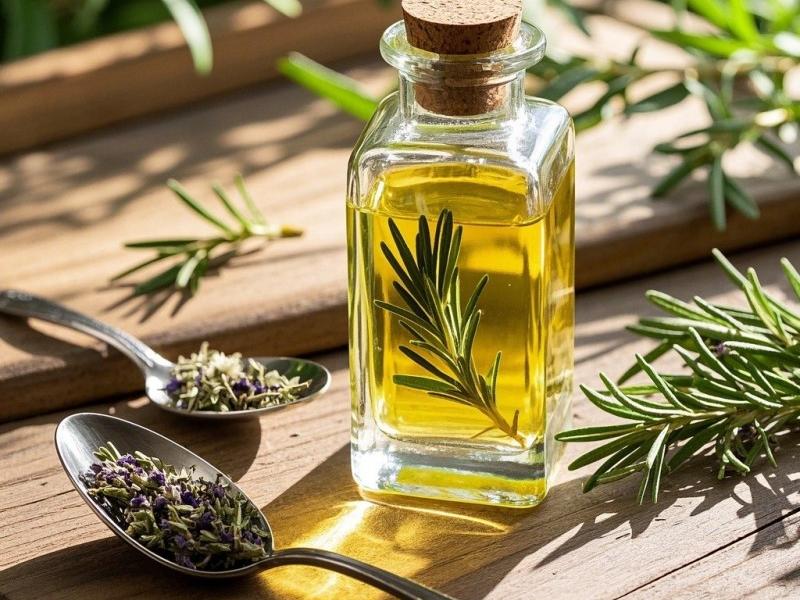
The key to treating cancer is to inhibit the proliferation of tumor cells, and rosemary is a potential natural anticancer agent. It was found that rosemary extract could significantly reduce the cell viability of human epithelial cancer cells, and the rich polyphenolic components in rosemary could inhibit the drug resistance of cancer cells, promote the uptake of drugs by cancer cells, and reduce drug efflux[73] . Rosemary extract also significantly reduced the phosphorylation levels of Akt and mTOR, which induced apoptosis and reduced migration of PC-3 prostate cancer cells.
In addition to the above mentioned effects, rosemary is also known to have reproductive protective effects. Rosemary has been shown to protect the adrenal glands and testes of male rabbits exposed to cypermethrin [74]. In addition, it was found that rosemary may mitigate the effects of consuming a high-fat diet by altering the composition of the microbiota[75] . The development of rosemary as a functional food is promising because of the benefits of appropriate intake of rosemary leaves in daily life.
3 Conclusion
Rosemary, as a famous spice plant of the Labiatae family, has been consumed around the world for thousands of years. As a natural antioxidant and traditional preservative in Kannada, rosemary has been developed and utilized in food and chemical industries. With the deepening of the research on natural products, rosemary is also gradually emerging in the field of medicine. Rosemary has a wide range of biological activities, including antioxidant, antibacterial, anti-inflammatory, antidepressant, antitumor, etc. through different pathways and targets [57, 76-79], and there are a large number of reports on antioxidant and antibacterial effects. However, the current mechanistic studies are limited to the classical inflammatory and tumor pathways, and future studies may focus on exploring new targets and pathways in which rosemary can play a role. As a dual-use plant, rosemary has a broad development prospect in many fields such as food, agriculture, cosmetics and medicine.
Although the research on rosemary has revealed that it has a large number of chemical components and a wide range of biological activities, there is still a lack of authoritative and effective evaluation system for the quality control of rosemary, which greatly restricts the full utilization of rosemary resources and the value of rosemary. In the future, the fingerprints of rosemary can be correlated with pharmacodynamics, and the mechanism of the active components of rosemary can be further investigated through the spectral-effect relationship and bioinformatics technology, which will provide a broader space for the research and development of rosemary products.
Reference
[1]De OLIVEIRA J R, CAMARGO S, De OLIVEIRA LD. Rosmarinus officinalis L. (rosemary) as therapeutic and prophylactic agent[J]. Journal of Biomedical Science, 2019,26(1):5.
[2] Xu Long. Wandering in the Herb Garden: Rosemary of the Sea[J]. China Food, 2005.
[3] Wang Yutong. Rosemary of the Sea[J]. Open Book (求医问药), 2015,0(1):69.
[4]MACHADO D G, CUNHA M P, NEIS V B, et al. Rosmarinus officinalis L. hydroalcoholic extract, similar to fluoxetine, reverses depressive-like behavior without altering learning deficit in olfactory bulbectomized mice[J]. Journal of Ethnopharmacology, 2012,143(1):158-169.
[5]IOBBI V, DONADIO G, LANTERI AP, et al. Targeted metabolite profiling of Salvia rosmarinus Italian local ecotypes and cultivars and inhibitory activity against Pectobacterium carotovorum subsp. carotovorum[J]. Frontiers in Plant Science,
2024,15:1164859.
[6]HUDEK TA, DURGO K, CUCKOVIC F, et al. Reduction of oral pathogens and oxidative damage in the CAL 27 cell line by Rosmarinus officinalis L. and Taraxacum officinale Web. extracts[J]. Journal of Ethnopharmacology, 2023,316:116761.
[7]ROCHA J, EDUARDO-FIGUEIRAM, BARATEIROA, et al. Anti-inflammatory effect of rosmarinic acid and an extract of Rosmarinus officinalis in rat models of local and systemic inflammation[J]. Basic & Clinical Pharmacology & Toxicology, 2015,116(5):398-413.
[8] Ding Zhiqian, Xu Min, Wu Hua, et al. Inhibitory effects of four rosemary compounds on lipopolysaccharide-induced oxidative stress and inflammation in RAW264.7 cells[J]. Food Science,2022,43(23):125-133.
[9] VAGKIDIS N, MARSH J, CHECHIK V. The role of polyphenolic antioxidants from tea and rosemary in the hydroxyl radical oxidation of N-acetyl alanine[J]. Molecules, 2023,28(22).
[10] LI Ming-Yang, LIU Shuai-Guang, LU Meng-Jiao, et al. In vitro antioxidant activities of different antioxidants and their effects on the oxidative stability of meat[J]. Food Science,2022,43(1):67-75.
[11]ARTURO A, R M M,A M M, et al. Acute oral safety study of rosemary extracts in rats.[J]. Journal of Food Protection,2008,71(4):790-795.
[12]KUNOVA S, TAGLIERI I, HASCIK P, et al. Dried herbs as an easy-to-use and cost-effective alternative to essential oils to extend the shelf Life of sheep lump cheese[J]. Foods, 2023,12(24).
[13]WU R, ZHU X, GUAN G, et al. Association of dietary flavonoid intakes with prevalence of chronic respiratory diseases in adults[J]. Journal of Translational Internal Medicine, 2024,22(1):205.
[14] Wei Q., Chen Y., Li J. Q., et al. Progress of chemical composition and biological effects of rosemary[J]. Today's Animal Husbandry and Veterinary Medicine, 2022,38(1):72-73.
[15]CORBU V M, GHEORGHE-BARBU I, MARINAS I C, et al. Eco-friendly solution based on Rosmarinus officinalis hydro-alcoholic extract to prevent biodeterioration of cultural heritage objects and buildings[J]. International Journal of Molecular
Sciences, 2022,23(19).
[16]BEGUM A, SANDHYA S, SHAFFATHA S, et al. An in-depth review on the medicinal flora Rosmarinus officinalis (Lamiaceae)[J]. Acta Scientiarum Polonorum, Technologia Alimentaria, 2013,12(1):61-73.
[17]KONTOGIANNI V G, TOMIC G, NIKOLIC I, et al. Phytochemical profile of Rosmarinus officinalis and Salvia officinalis extracts and correlation to their antioxidant and anti-proliferative activity[J]. Food Chemistry, 2013,136(1):120-129.
[18]MENAP, CIRLINI M, TASSOTTIM, et al. Phytochemical profiling of flavonoids, phenolic acids, terpenoids, and volatile fraction of a Rosemary (Rosmarinus officinalis L.) extract[J]. Molecules, 2016,21(11).
[19]MILJANOVIC A, DENT M, GRBIN D, et al. Sage, Rosemary, and Bay Laurel hydrodistillation by-products as a source of bioactive compounds[J]. Plants (Basel), 2023,12(13).
[20] Nie Jiyu. Compositional analysis, antioxidant study of rosemary flavonoids and their application in cured meat products [D]. Tianjin University of Commerce, 2018.
[21]PEIXOTO J, ALVAREZ-RIVERAG, ALVES R C, et al. Comprehensive phenolic and free amino acid analysis of rosemary infusions: influence on the antioxidant potential[J]. Antioxidants (Basel), 2021,10(3).
[22] CHEN Sili, ZHOU Xueqing, LIU Xiangyi et al. Studies on the chemical composition of rosemary[J]. Fine Chemical Industry, 2009,9(26):882-884.
[23]BORRAS-LINARES I, STOJANOVIC Z, QUIRANTES-PINE R, et al. Rosmarinus officinalis leaves as a natural source of bioactive compounds[J]. International Journal of Molecular Sciences, 2014,15(11):20585-20606.
[24]NOUSKAC, IRAKLI M, GEORGIOU M, et al. Physicochemical characteristics, antioxidant properties, aroma profile, and sensory qualities of value-added wheat breads fortified with post-distillation solid wastes of aromatic plants[J]. Foods, 2023,12(21).
[25]LUTAE A, BITAA, MOROSAN A, et al. Implications of the Cultivation of Rosemary and Thyme (Lamiaceae) in Plant Communities for the Development of Antioxidant Therapies[J]. International Journal of Molecular Sciences, 2023,24(14).
[26]SANTANA-MERIDES O, POLISSIONE M., IZQUIERDO-MELERO M, et al. Polyphenol composition, antioxidant and bioplaguicide activities of the solid residue from hydrodistillation of Rosmarinus officinalis L.[J]. Industrial Crops and Products, 2014,59:125-134.
[27]SLIMESTAD R, JOHNYA, THOMSEN M G, et al. Chemical profiling and biological activity of extracts from nine norwegian medicinal and aromatic plants[J]. Molecules, 2022,27(21).
[28]CHRISTAKI S, BOULOUMPASI E, LALIDOU E, et al. Bioactive profile of distilled solid by-roducts of Rosemary, Greek Sage and Spearmint as Affected by Distillation Methods[J]. Molecules, 2022,27(24).
[29]PEREZ-MENDOZA M B, LLORENS-ESCOBAR L, VANEGAS-ESPINOZA P E, et al. Chemical characterization of leaves and calli extracts of Rosmarinus officinalis by UHPLC-MS[J]. Electrophoresis, 2020,41(20):1776-1783.
[30]COSTA A, ALVES R C, VINHAAF, et al. Nutritional, chemical and antioxidant/pro-oxidant profiles of silverskin, a coffee roasting by-product[J]. Food Chemistry, 2018,267:28-35.
[31]MICIC D, DUROVIC S, RIABOV P, et al. Rosemary essential oils as a promising source of bioactive compounds: Chemical composition, thermal properties, biological activity, and gastronomical perspectives[J]. Foods, 2021,10(11).
[32]ABDOLLAHI M, REZAEI M, FARZI G. A novel active bionanocomposite film incorporating rosemary essential oil and nanoclay into chitosan[J]. Journal of Food Engineering, 2012,111:343-350.
[33]COSTEAL, CHITESCU C L, BOSCENCU R, et al. The polyphenolic profile and antioxidant activity of five vegetal extracts with hepatoprotective potential[J]. Plants (Basel), 2022,11(13).
[34]YANY, LIU Y, YANG Y, et al. Carnosol suppresses microglia cell inflammation and apoptosis through PI3K/AKT/mTOR signaling pathway[J]. Immunopharmacology and Immunotoxicology, 2022,44(5):656-662.
[35]WOJTUNIK K A, CIESLALM, WAKSMUNDZKA-HAJNOS M. Model studies on the antioxidant activity of common terpenoid constituents of essential oils by means of the 2,2-diphenyl-1-picrylhydrazyl method[J]. Journal of Agricultural and Food Chemistry,2014,62(37):9088-9094.
[36]Lemos M F, Pacheco H P, Endringer D C, et al. Seasonality modifies rosemary’s composition and biological activity[J]. Industrial Crops and Products, 2015,70:41-47.
[37]BASHIR O, AMIN T, HUSSAIN S Z, et al. Development, characterization and use of rosemary essential oil loaded water-chestnut starch based nanoemulsion coatings for enhancing post-harvest quality of apples var. Golden delicious[J]. Current Research in Food Science, 2023,7:100570.
[38]BEN AA, GOUJAH, HANNACHI H, et al. Seasonal changes in rosemary species: Achemotaxonomic assessment of two varieties based on essential oil compounds, antioxidant and antibacterial activities[J]. PLoS One, 2022,17(8):e273367.
[39]GachkarL, Yadegari D, Rezaei M, et al. Chemical and biological characteristics of Cuminum cyminum and Rosmarinus officinalis essential oils[J]. Food Chemistry, 2007,102:898-904.
[40]SMILJANIC K, PRODIC I, TRIFUNOVIC S, et al. Multistep approach points to compounds responsible for the biological activity and safety of hydrolates from nine Lamiaceae medicinal plants on human skin fibroblasts[J]. Antioxidants (Basel), 2023,12(11).
[41]ALHAITHLOULH, ALQAHTANI M M, ABDEIN MA, et al. Rosemary and neem methanolic extract: antioxidant, cytotoxic, and larvicidal activities supported by chemical composition and molecular docking simulations[J]. Frontiers in Plant Science,2023,14:1155698.
[42]AL-TAWARAH N M, AL-DMOUR R H, ABU H M, et al. Rosmarinus officinalis and mentha piperita oils supplementation enhances memory in arat model of scopolamine-induced Alzheimer's disease-like condition[J]. Nutrients, 2023,15(6).
[43]PELLEGRINI M, RICCI A, SERIO A, et al. Characterization of essential oils obtained from abruzzo autochthonous plants:antioxidant and antimicrobial activities assessment for food application[J]. Foods, 2018,7(2).
[44]Teixeira B, MarquesA, Ramos C, et al. Chemical composition and antibacterial and antioxidant properties of commercial essential oils[J]. Industrial Crops And Products, 2013,43:587-595.
[45]BOZIN B, MIMICA-DUKICN, SAMOJLIK I, et al. Antimicrobial and antioxidant properties of rosemary and sage (Rosmarinus officinalis L. and Salvia officinalis L., Lamiaceae) essential oils[J]. Journal of Agricultural and Food Chemistry, 2007,55(19):7879-7885.
[46]Moore J, Yousef M, Tsiani E. Anticancer effects of rosemary (Rosmarinus officinalis L.) extract and rosemary extract polyphenols.Nutrients[J]. Nutrients, 2016,11(8):731.
[47] He Mozhong, Cao Wei, Zeng Guangyao. Studies on the phenolic acid components of Rosemary[J]. Chinese Herbal Medicine, 2021,13(52):3798-3803.
[48]VALLVERDU-QUERALTA, REGUEIRO J, MARTINEZ-HUELAMO M, et al. A comprehensive study on the phenolic profile of widely used culinary herbs and spices: rosemary, thyme, oregano, cinnamon, cumin and bay[J]. Food Chemistry, 2014,154:299-307.
[49] Cai, Yusheng. YUAN Ruiying, ZHUO Ma Dongzhi, WEI Yulu, HUANG. Two new rosinane-type diterpene compounds from Rosemary[J]. Chinese Herbal Medicine, 2019,20(50):4853-4858.
[50]ALAM M, AHMED S, ELASBALI AM, et al. Therapeutic implications of Caffeic acid in cancer and neurological diseases[J].Frontiers in Oncology, 2022,12:860508.
[51] LIN Shuangshang, ZHANG Haifeng, CHE Jianmei. Simultaneous Determination of Sclareolic Acid, Sclareol and Rosmarinic Acid by HPLC[J]. China Agricultural Science and Technology Bulletin, 2021,23(5):187-193.
[52]SIRAJUDEEN F, BOU M L, BUSTANJI Y, et al. Exploring the potential of rosemary derived compounds (Rosmarinic and Carnosic acids) as cancer therapeutics: Current Knowledge and Future Perspectives[J]. Biomolecules & Therapeutics, 2024,32(1):38-55.
[53]BOO Y C. Therapeutic potential and mechanisms of rosmarinic acid and the extracts of lamiaceae plants for the treatment of fibrosis of various organs[J]. Antioxidants (Basel), 2024,13(2).
[54]AKHTER J, GOSWAMI P, ALI B M, et al. Protective effect of rosmarinic acid on the transmembrane transporter Ctr1 expression in cisplatin-treated mice[J]. Journal of Cancer Research and Therapeutics, 2023,19(7):1753-1759.
[55]MECCATTI V M, SANTOS LF, de CARVALHO L S, et al. Antifungal action of herbal plants' glycolic extracts against candida species[J]. Molecules, 2023,28(6).
[56]MATSUI R, HONDA R, KANOME M, et al. Designing antioxidant peptides based on the antioxidant properties of the amino acid side-chains[J]. Food Chemistry, 2018,245:750-755.
[57]GONCALVES GA, CORREA R, BARROS L, et al. Effects of in vitro gastrointestinal digestion and colonic fermentation on a rosemary (Rosmarinus officinalis L) extract rich in rosmarinic acid[J]. Food Chemistry, 2019,271:393-400.
[58] WU Juanjuan, CAO Kaihang, QIAN Jianrui, et al. Studies on the differences in chemical composition of rosemary from different origins[J]. China Food Additives, 2022,33(3):1-8.
[59] GUO Dongyun, WAN Na, WU Yi, et al. Compositional analysis and antioxidant and antibacterial activities of essential oil from Rosemary in Jiangxi Province[J]. Natural Products Research and Development,2022,34(2):263-271.
[60] XU Yifan, LIU Pu, LIU Peipei, et al. Determination of the activity of Leptospermum officinale by HPLC-DAD method [J]. Determination of 11 antioxidant active components in rosemary stems and leaves by HPLC-DAD[J]. Chinese Herbal Medicine, 2018,49(09):2153-2157.
[61] JIANG Tao, YANG Guoen, HUANG Donghai, et al. Research on the extraction process of flavonoid compounds in rosemary[J]. China Food Additives, 2015,26(5):114-119.
[62] JIANG Lei, KANG Dacheng, ZHANG Wangang, et al. Antioxidant activity of rosemary extracts in vitro and in salami[J]. Food Science, 2018,39(13):68-73.
[63] WANG Xu, ZHAO Yue, LI Tingting, et al. Effects of natural antioxidants on the stability of corn oil[J]. Food Science, 2018,39(16):7-12.
[64]GUO M, YANG L, LIX, et al. Antioxidant efficacy of rosemary extract in improving the oxidative stability of rapeseed oil during storage[J]. Foods, 2023,12(19).
[65]TEOH R W, TING A, THOO YY. Characterization and modeling of diffusion kinetics of rosemary oleoresin extract from gellan gum-based film[J]. Food Science and Technology International, 2023,60(12):2978-2989.
[66]NEAGU R, POPOVICI V, IONESCU LE, et al. Antibacterial and antibiofilm effects of different samples of five commercially available essential oils[J]. Antibiotics (Basel), 2023,12(7).
[67]ZERAAT PF, FALAH F, SANAEI F, et al. The effect of plasma-activated water combined with rosemary extract (Rosmarinus officinalis L.) on the physicochemical properties of frankfurter sausage during storage[J]. Foods, 2023,12(21).
[68]LEE E J, CHAY J, MOON H K. Determination of the optimal concentration of natural antimicrobial agents in marinade sauce for meal kits[J]. Journal of Food Protection, 2024,87(3):100218.
[69]KACALOVAT, JAROSOVA A. How storage time affects sensory, chemical, and physical characteristics of flavored olive oil[J].Food Science & Nutrition, 2023,11(10):6648-6659.
[70]HARLINA PW, MAM, SHAHZAD R, et al. Effect of rosemary extract on lipid oxidation, fatty acid composition, antioxidant capacity, and volatile compounds of salted duck eggs[J]. Food Science of Animal Resources, 2022,42(4):689-711.
[71]ESLAMI F M, RAZAVI S, RASOOLIJAZI H, et al. Neuroprotective effects of rosemary extract on white matter of prefrontal cortex in old rats[J]. Iranian Journal of Basic Medical Sciences, 2024,27(4):518-523.
[72]MARSH J M, WHITAKER S, LI L, et al. The key phytochemistry of rosemary (Salvia rosmarinus) contributing to hair protection against UV[J]. International Journal of Cosmetic Science, 2023,45(6):749-760.
[73]PRADEEP V R, MENAKA S, SURESH V, et al. Anticancer effects of Rosmarinus officinalis leaf extract on KB cell lines[J].Cureus, 2024,16(2):e54031.
[74]ALI H S, AL-RIKABY AA. Evaluating the influence of rosemary leaves extract on hormonal and histopathological alterations in male rabbits exposed to cypermethrin[J]. Archives of Razi Institute, 2023,78(3):797-805.
[75]MADSEN S, BAK SY, YDE C C, et al. Unravelling effects of rosemary (Rosmarinus officinalis L.) extract on hepatic fat accumulation and plasma lipid profile in rats fed a high-fat western-style diet[J]. Metabolites, 2023,13(9).
[76]GHASEMZADEH R M, HOSSEINZADEH H. Therapeutic effects of rosemary (Rosmarinus officinalis L.) and its active constituents on nervous system disorders[J]. Iranian Journal Of Basic Medical Sciences, 2020,23(9):1100-1112.
[77]MARTINEZ AL, GONZALEZ-TRUJANO M E, PELLICER F, et al. Antinociceptive effect and GC/MS analysis of Rosmarinus officinalis L. essential oil from its aerial parts[J]. Planta Medica, 2009,75(5):508-511.
[78]BORGES R S, ORTIZ B, PEREIRA A, et al. Rosmarinus officinalis essential oil: A review of its phytochemistry,anti-inflammatory activity, and mechanisms of action involved[J]. Journal of Ethnopharmacology, 2019,229:29-45.
[79]EINBOND L S, WU HA, KASHIWAZAKIR, et al. Carnosic acid inhibits the growth of ER-negative human breast cancer cells and synergizes with curcumin[J]. Fitoterapia, 2012,83(7):1160-1168.


 English
English French
French Spanish
Spanish Russian
Russian Korean
Korean Japanese
Japanese

